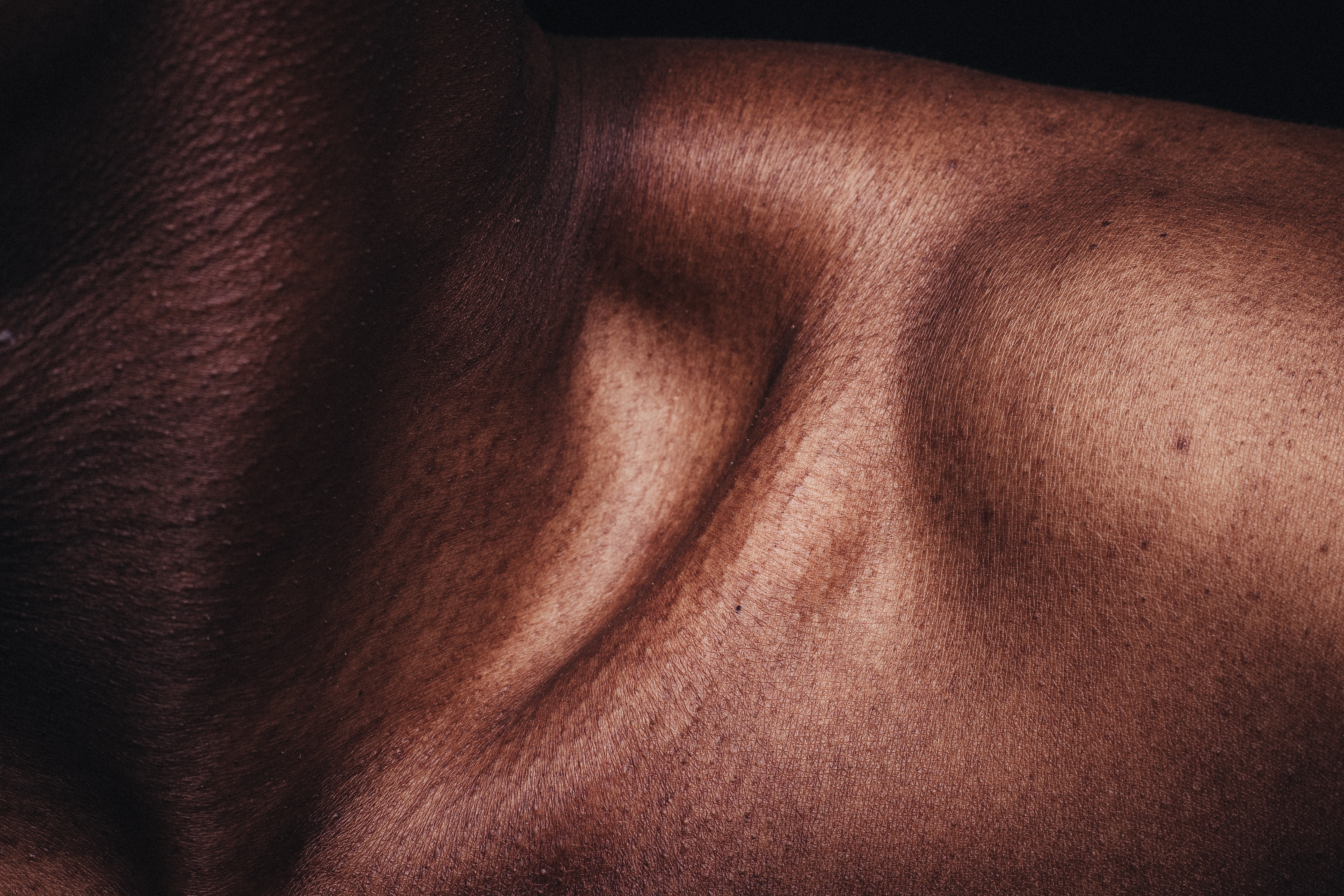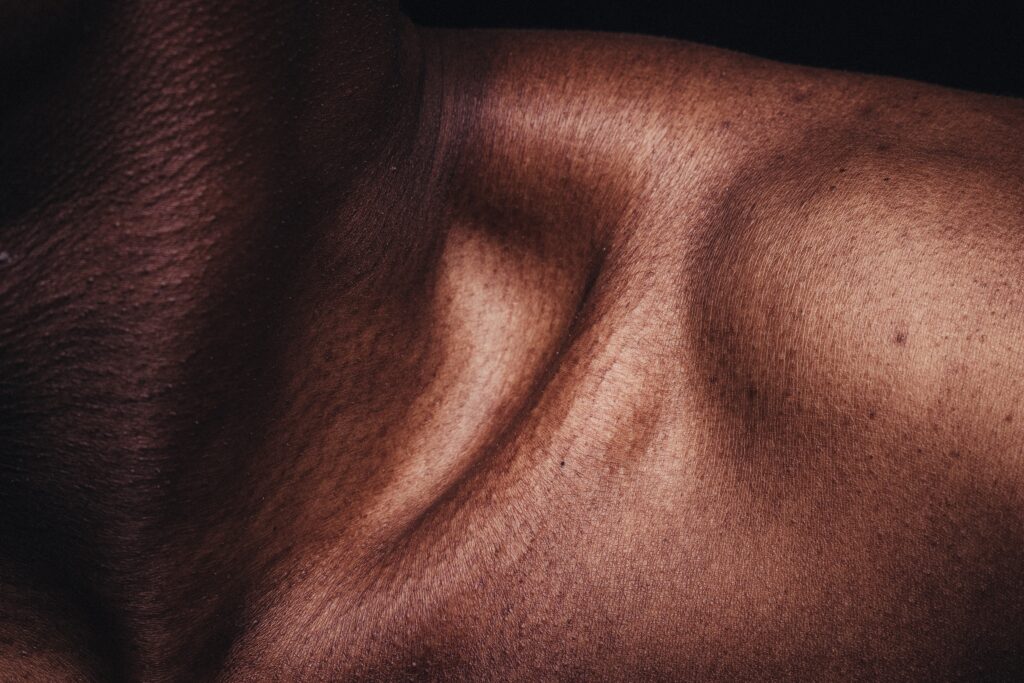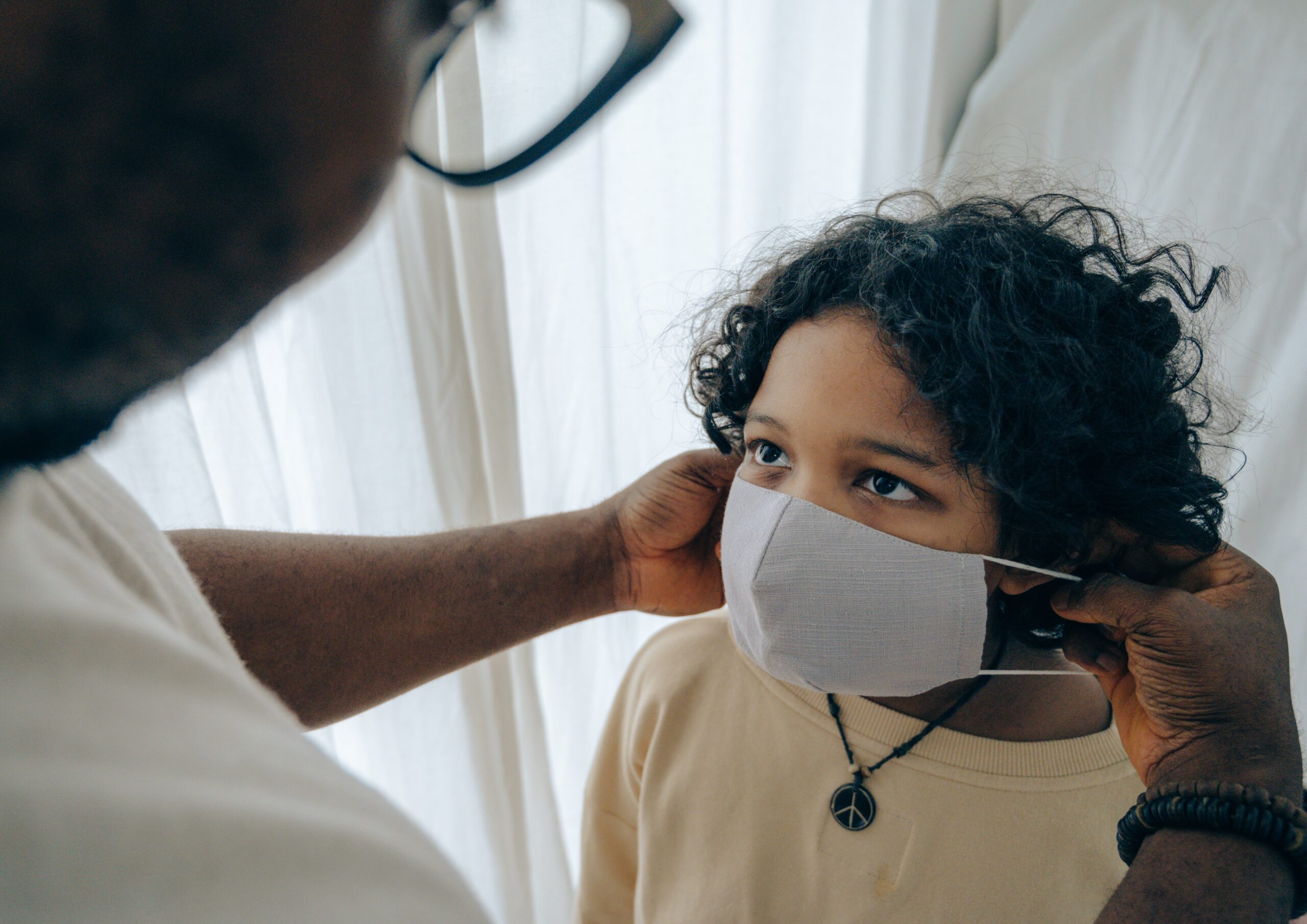Beauty
According to Dior Couture, this taboo fashion accessory is back
Sed ut perspiciatis unde omnis iste natus error sit voluptatem accusantium doloremque laudantium, totam rem aperiam.

Nulla pariatur. Excepteur sint occaecat cupidatat non proident, sunt in culpa qui officia deserunt mollit anim id est laborum.
Sed ut perspiciatis unde omnis iste natus error sit voluptatem accusantium doloremque laudantium, totam rem aperiam, eaque ipsa quae ab illo inventore veritatis et quasi architecto beatae vitae dicta sunt explicabo.
Neque porro quisquam est, qui dolorem ipsum quia dolor sit amet, consectetur, adipisci velit, sed quia non numquam eius modi tempora incidunt ut labore et dolore magnam aliquam quaerat voluptatem. Ut enim ad minima veniam, quis nostrum exercitationem ullam corporis suscipit laboriosam, nisi ut aliquid ex ea commodi consequatur.
At vero eos et accusamus et iusto odio dignissimos ducimus qui blanditiis praesentium voluptatum deleniti atque corrupti quos dolores et quas molestias excepturi sint occaecati cupiditate non provident, similique sunt in culpa qui officia deserunt mollitia animi, id est laborum et dolorum fuga.
Quis autem vel eum iure reprehenderit qui in ea voluptate velit esse quam nihil molestiae consequatur, vel illum qui dolorem eum fugiat quo voluptas nulla pariatur.
Temporibus autem quibusdam et aut officiis debitis aut rerum necessitatibus saepe eveniet ut et voluptates repudiandae sint et molestiae non recusandae. Itaque earum rerum hic tenetur a sapiente delectus, ut aut reiciendis voluptatibus maiores alias consequatur aut perferendis doloribus asperiores repellat.
Lorem ipsum dolor sit amet, consectetur adipisicing elit, sed do eiusmod tempor incididunt ut labore et dolore magna aliqua. Ut enim ad minim veniam, quis nostrud exercitation ullamco laboris nisi ut aliquip ex ea commodo consequat.
“Duis aute irure dolor in reprehenderit in voluptate velit esse cillum dolore eu fugiat”
Nemo enim ipsam voluptatem quia voluptas sit aspernatur aut odit aut fugit, sed quia consequuntur magni dolores eos qui ratione voluptatem sequi nesciunt.
Et harum quidem rerum facilis est et expedita distinctio. Nam libero tempore, cum soluta nobis est eligendi optio cumque nihil impedit quo minus id quod maxime placeat facere possimus, omnis voluptas assumenda est, omnis dolor repellendus.
Beauty
What is Patch Testing?
Sed ut perspiciatis unde omnis iste natus error sit voluptatem accusantium doloremque laudantium, totam rem aperiam.

Introduction:
Greetings, family! Today, we delve into the fascinating world of patch testing, a diagnostic method employed by medical professionals to identify allergens causing skin issues. Join us as we explore the intricacies of patch testing and unravel the mysteries behind skin allergies.
Understanding Patch Testing:
Patch testing serves as an investigative tool for doctors to pinpoint the triggers behind rashes, itchiness, and other skin problems. By conducting patch testing, medical experts seek to determine whether an individual is allergic to specific substances known as allergens. These allergens can range from common metals like nickel to components found in perfumes, lotions, or even everyday items found in schools or homes.
The Procedure:
During patch testing, a healthcare provider places small patches on the patient’s back. These patches contain a minute amount of various substances suspected of causing the skin issue. Fear not, as these patches are completely safe and feel like gentle stickers adhering to the skin. To secure them, the doctor or nurse applies a special tape over the patches.
What Happens Next?
Now comes the intriguing part! You will wear the patches for a few days, during which it’s advisable to avoid activities that might dislodge them, such as swimming or excessive sweating. While wearing the patches, you may experience slight tickling or itching sensations underneath. It’s essential to resist the urge to scratch or disturb the patches, as this could affect the accuracy of the results. The doctor or nurse will provide you with clear instructions on how to care for the patches during this period.
Follow-Up Visit:
After the designated period, you will return to the doctor’s office for the removal of the patches. The healthcare professional will thoroughly examine your skin to identify any reactions. These reactions may manifest as redness, bumps, or itchiness, which act as indicators that your skin is responding to certain substances.
Understanding the Results:
Upon analyzing the results, the doctor will explain their findings to you. If your skin displayed a reaction to any of the tested substances, it suggests a possible allergy. It’s crucial to remember that allergies do not reflect negligence or poor skincare practices. Allergies are simply your body’s way of informing you that it does not tolerate certain elements.
The Next Steps:
Upon identifying the triggers causing your skin troubles, the doctor will provide guidance on how to avoid exposure to those specific allergens. This may involve steering clear of particular lotions, soaps, or jewelry that contain those allergens. In addition, the doctor may recommend specific creams or treatments to alleviate the discomfort and enhance the health of your skin.
Remember, each person’s skin is unique, and what irritates one individual’s skin may not affect another’s. This is precisely why patch testing is so valuable—it enables doctors to customize treatment plans that suit your skin’s specific needs and maintain its overall well-being.

Photo: https://unsplash.com/@auttgood
Conclusion:
So, fret not if you encounter skin troubles—medical detectives armed with patch testing are here to solve the puzzle and guide you towards skin wellness.
Beauty
How to fade dark spots in darker skin tones FASTER
Sed ut perspiciatis unde omnis iste natus error sit voluptatem accusantium doloremque laudantium, totam rem aperiam.

Table of Contents
I. Introduction
A. Overview of the challenges faced by individuals with darker skin tones
II. Understanding Dark Spots in Darker Skin Tones
A. Causes of dark spots
1. Hyperpigmentation
2. Post-inflammatory hyperpigmentation (PIH)
B. Differences in the appearance of dark spots in darker skin tones
C. Common areas affected by dark spots
III. Identifying the Right Treatment Approach
A. Consulting a dermatologist
B. Importance of tailoring treatments to darker skin tones
C. Considering the severity and type of dark spots
IV. Treatment Options for Fading Dark Spots in Darker Skin Tones
A. Topical treatments
1. Hydroquinone
2. Retinoids
3. Azelaic acid
4. Kojic acid
B. Chemical peels
1. Alpha-hydroxy acids (AHAs)
2. Beta-hydroxy acids (BHAs)
3. Jessner’s peel
C. Laser treatments
1. Q-switched lasers
2. Fractional lasers
D. Natural remedies and home treatments
1. Lemon juice
2. Aloe vera
3. Turmeric
V. Precautions and Best Practices
A. Importance of patch testing
B. Gradual introduction of treatments
C. Sun protection and SPF usage
D. Adhering to a skincare routine
VI. Lifestyle Factors and Additional Tips
A. Diet and nutrition
B. Stress management
C. Adequate sleep
D. Avoiding picking or scratching dark spots
VII. Patience and Realistic Expectations
A. Timeframe for seeing results
B. Importance of consistency in treatment
C. Accepting the natural variations in skin tone
VIII. Conclusion
A. Recap of key points discussed
B. Encouragement for individuals with darker skin tones
C. Importance of seeking professional guidance
D. Optimistic outlook for fading dark spots in darker skin tones
I. Introduction ( Unique challenges of darker skin )
Individuals with darker skin tones often face unique challenges related to their skin color. These challenges arise due to the specific characteristics of darker skin, which require tailored approaches to skincare, healthcare, and even societal perceptions. Understanding these challenges is crucial for promoting inclusivity, providing appropriate care, and combating systemic biases. Here are some of the key challenges faced by individuals with darker skin tones:
1. Limited Representation and Beauty Standards: The media and beauty industry have traditionally favored lighter skin tones, perpetuating Eurocentric beauty standards. This lack of representation can lead to feelings of inadequacy and low self-esteem among individuals with darker skin. The limited availability of makeup shades, skincare products, and haircare options that cater to diverse skin tones further compounds these challenges.
2. Hyperpigmentation and Uneven Skin Tone: Darker skin tones are prone to hyperpigmentation, which manifests as dark spots, melasma, or post-inflammatory hyperpigmentation (PIH) due to acne, rashes, or trauma. The higher melanin content in darker skin can cause prolonged discoloration and make the treatment of these conditions more challenging. As a result, individuals with darker skin tones may struggle to find effective solutions to even out their skin tone.
3. Limited Access to Dermatological Care: There is a disparity in access to dermatological care for individuals with darker skin tones. Dermatologists who specialize in treating skin conditions specific to darker skin may be less accessible, particularly in certain regions or countries. This can lead to delayed diagnosis and inadequate treatment, exacerbating existing skin issues.
4. Misdiagnosis and Underdiagnosis: Due to limited training in dermatology for darker skin, healthcare professionals may be more likely to misdiagnose or underdiagnose certain conditions in individuals with darker skin tones. For example, conditions like vitiligo, lupus, or skin cancer can present differently in darker skin, resulting in delayed or incorrect diagnoses. This highlights the need for improved education and awareness among healthcare providers.
5. Sun Protection Challenges: While individuals with darker skin tones have a natural advantage in terms of sun protection due to increased melanin, they are not immune to the harmful effects of UV radiation. However, misconceptions about darker skin being inherently protected from sun damage can lead to a lack of awareness and inadequate sun protection practices. This can result in an increased risk of skin cancer, premature aging, and other sun-related complications.
6. Cultural Stigma and Colorism: In some societies, colorism, a form of discrimination based on skin color, still persists. Individuals with darker skin tones may face prejudice, stereotypes, and bias based on their complexion, leading to social and psychological challenges. Colorism can affect various aspects of life, including employment opportunities, relationships, and self-worth.
Addressing these challenges requires a multi-faceted approach that encompasses education, representation, and healthcare reform. Increasing representation and diversity in the media and beauty industry can promote inclusivity and challenge existing beauty standards. Improved dermatological training on treating darker skin tones can enhance the accuracy of diagnoses and treatment options. Additionally, raising awareness about the importance of sun protection and developing inclusive skincare products and treatments can help individuals with darker skin tones maintain healthy skin.
By acknowledging and addressing these challenges, society can foster an environment that celebrates diversity and inclusivity, ensuring that individuals with darker skin tones receive the care, support, and opportunities they deserve.

Photo: https://unsplash.com/@auttgood
II. Understanding Dark Spots in Darker Skin Tones
Individuals with darker skin tones often face unique challenges related to their skin color. These challenges arise due to the specific characteristics of darker skin, which require tailored approaches to skincare, healthcare, and even societal perceptions. Understanding these challenges is crucial for promoting inclusivity, providing appropriate care, and combating systemic biases. Here are some of the key challenges faced by individuals with darker skin tones:
1. Limited Representation and Beauty Standards: The media and beauty industry have traditionally favored lighter skin tones, perpetuating Eurocentric beauty standards. This lack of representation can lead to feelings of inadequacy and low self-esteem among individuals with darker skin. The limited availability of makeup shades, skincare products, and haircare options that cater to diverse skin tones further compounds these challenges.
2. Hyperpigmentation and Uneven Skin Tone: Darker skin tones are prone to hyperpigmentation, which manifests as dark spots, melasma, or post-inflammatory hyperpigmentation (PIH) due to acne, rashes, or trauma. The higher melanin content in darker skin can cause prolonged discoloration and make the treatment of these conditions more challenging. As a result, individuals with darker skin tones may struggle to find effective solutions to even out their skin tone.
3. Limited Access to Dermatological Care: There is a disparity in access to dermatological care for individuals with darker skin tones. Dermatologists who specialize in treating skin conditions specific to darker skin may be less accessible, particularly in certain regions or countries. This can lead to delayed diagnosis and inadequate treatment, exacerbating existing skin issues.
4. Misdiagnosis and Underdiagnosis: Due to limited training in dermatology for darker skin, healthcare professionals may be more likely to misdiagnose or underdiagnose certain conditions in individuals with darker skin tones. For example, conditions like vitiligo, lupus, or skin cancer can present differently in darker skin, resulting in delayed or incorrect diagnoses. This highlights the need for improved education and awareness among healthcare providers.
5. Sun Protection Challenges: While individuals with darker skin tones have a natural advantage in terms of sun protection due to increased melanin, they are not immune to the harmful effects of UV radiation. However, misconceptions about darker skin being inherently protected from sun damage can lead to a lack of awareness and inadequate sun protection practices. This can result in an increased risk of skin cancer, premature aging, and other sun-related complications.
6. Cultural Stigma and Colorism: In some societies, colorism, a form of discrimination based on skin color, still persists. Individuals with darker skin tones may face prejudice, stereotypes, and bias based on their complexion, leading to social and psychological challenges. Colorism can affect various aspects of life, including employment opportunities, relationships, and self-worth.
Addressing these challenges requires a multi-faceted approach that encompasses education, representation, and healthcare reform. Increasing representation and diversity in the media and beauty industry can promote inclusivity and challenge existing beauty standards. Improved dermatological training on treating darker skin tones can enhance the accuracy of diagnoses and treatment options. Additionally, raising awareness about the importance of sun protection and developing inclusive skincare products and treatments can help individuals with darker skin tones maintain healthy skin.
Darker skin tones exhibit unique characteristics and variations in comparison to lighter skin tones. When it comes to dark spots or hyperpigmentation, these differences become particularly pronounced. Understanding the nuances of dark spots in darker skin tones is crucial for developing effective treatment strategies and providing appropriate care. Here are some key differences in the appearance of dark spots in darker skin tones:
1. Color Variation: Dark spots in darker skin tones can vary in color, ranging from deep brown to black or even blue-gray. This is due to the higher concentration of melanin, the pigment responsible for skin color, in darker skin. The excess melanin production in response to inflammation or injury can result in dark spots that appear darker and more pronounced than in lighter skin tones.
2. Prolonged Discoloration: Dark spots in darker skin tones tend to linger for a longer period compared to lighter skin tones. The increased melanin content in the epidermis provides a protective shield against UV radiation but also slows down the healing process. This can result in post-inflammatory hyperpigmentation (PIH) that lasts for several months or even years, causing frustration and concern for individuals seeking to fade these spots.
3. Depth and Distribution: Dark spots in darker skin can occur not only on the surface but also deeper within the skin layers. This can make them more challenging to treat effectively. Additionally, these spots may be more diffusely distributed rather than localized, making it necessary to address larger areas of the skin during treatment.
4. Texture and Blotchiness: Dark spots in darker skin can exhibit textural changes, such as roughness or unevenness. The excess melanin can cause the affected areas to feel rough or bumpy to the touch. Moreover, the presence of multiple dark spots across the skin can create a blotchy appearance, further impacting the overall skin texture and tone.
5. Differentiating Dark Spots from Melasma: Melasma, a common pigmentary disorder, is characterized by symmetrical dark patches on the face. It is more prevalent in individuals with darker skin tones. Distinguishing melasma from other forms of hyperpigmentation is essential, as it may require specific treatment approaches. Dermatologists can perform a thorough examination to differentiate melasma from other causes of dark spots and provide appropriate treatment options.
6. Higher Risk of Hypopigmentation: In the process of fading dark spots in darker skin tones, there is a higher risk of developing hypopigmentation, which is the loss of skin color. The use of certain treatment modalities, such as laser therapies or chemical peels, may disrupt melanin production and result in lighter patches of skin. Careful consideration of the skin’s response and appropriate monitoring are necessary to minimize this risk.
Recognizing these differences in the appearance of dark spots in darker skin tones is vital for tailoring treatment options. Dermatologists and skincare professionals must consider the specific needs and characteristics of darker skin when recommending therapies. Treatment plans may involve a combination of topical agents, chemical peels, laser treatments, or natural remedies, taking into account the depth, distribution, and color variation of the dark spots.
The appearance of dark spots in darker skin tones is influenced by the unique properties of melanin and the physiological characteristics of darker skin. Understanding these differences allows for the development of targeted treatment strategies that address the specific needs and challenges faced by individuals with darker skin. By adopting a comprehensive and inclusive approach to skincare, we can promote effective dark spot fading and contribute to the overall well-being and confidence of individuals with darker skin tones.
III. Identifying the Right Treatment Approach
It’s worth noting that the distribution and extent of hyperpigmentation can vary from person to person. Some individuals may experience hyperpigmentation in multiple areas, while others may have it localized to specific regions. Additionally, underlying conditions like melasma or certain skin disorders can influence the areas of hyperpigmentation.
Proper sun protection, including sunscreen application and protective clothing, can help prevent or minimize hyperpigmentation on sun-exposed areas. If hyperpigmentation occurs, it’s advisable to consult with a dermatologist or skincare professional to determine the underlying cause and develop an appropriate treatment plan for fading the dark spots and achieving a more even skin tone.
IV. Treatment Options for Fading Dark Spots in Darker Skin Tones
A. Topical treatments
1. Hydroquinone
2. Retinoids
3. Azelaic acid
4. Kojic acid
B. Chemical peels
1. Alpha-hydroxy acids (AHAs)
2. Beta-hydroxy acids (BHAs)
3. Jessner’s peel
C. Laser treatments
1. Q-switched lasers
2. Fractional lasers
D. Natural remedies and home treatments
1. Lemon juice
2. Aloe vera
3. Turmeric
Fading dark spots or hyperpigmentation requires a diligent approach and adherence to certain precautions and best practices. By following these guidelines, individuals can enhance the effectiveness of their treatment and minimize the risk of further skin damage. Here are some important precautions and best practices to consider when fading dark spots:
Sun Protection: Protecting your skin from the sun is essential as UV radiation can worsen hyperpigmentation and hinder the fading process. Always apply a broad-spectrum sunscreen with SPF 30 or higher to all exposed skin, even on cloudy days. Reapply sunscreen every two hours, or more frequently if sweating or swimming. Additionally, seek shade, wear protective clothing, and use wide-brimmed hats and sunglasses to shield your skin from direct sun exposure.
Gentle Skincare Routine: Opt for a gentle skincare routine to avoid irritating the skin and exacerbating hyperpigmentation. Use mild, non-abrasive cleansers and avoid harsh scrubs or exfoliants that can cause inflammation. Incorporate products with ingredients like niacinamide, vitamin C, or kojic acid known for their skin-brightening properties. However, it’s important to introduce new products gradually and patch test to ensure compatibility with your skin.
Avoid Picking or Scratching: Resist the temptation to pick, scratch, or pop any dark spots, as this can lead to further inflammation and potentially worsen hyperpigmentation. Picking at the skin can also result in scarring, which may take longer to fade. Be patient and allow the natural healing process to take place.
Test Products and Treatments: Before applying any new skincare products or undergoing professional treatments, perform a patch test to check for adverse reactions or sensitivities. Apply a small amount of the product to a small area of your skin and monitor for any signs of irritation or allergy over 24 to 48 hours. This precaution can help prevent adverse reactions and ensure that the products or treatments are suitable for your skin.
Consult a Dermatologist: If over-the-counter treatments do not yield satisfactory results or if you have concerns about your skin condition, consult a dermatologist. A dermatologist can assess your specific situation, determine the underlying cause of hyperpigmentation, and recommend targeted treatment options tailored to your skin type and condition. They can also provide professional treatments, such as chemical peels or laser therapies, for more stubborn or persistent dark spots.
Consistency and Patience: Fading dark spots takes time, and consistent adherence to your skincare routine and treatment plan is crucial. Results may not be immediate, so it’s important to remain patient and consistent in your efforts. It may take several weeks or even months to notice significant improvement in the appearance of dark spots. Stay committed to your routine and follow the recommendations of your dermatologist for optimal results.
Beauty
Emily Ratajkowski channels back-to-school style
Nulla pariatur. Excepteur sint occaecat cupidatat non proident, sunt in culpa qui officia deserunt mollit anim id est laborum.

Et harum quidem rerum facilis est et expedita distinctio. Nam libero tempore, cum soluta nobis est eligendi optio cumque nihil impedit quo minus id quod maxime placeat facere possimus, omnis voluptas assumenda est, omnis dolor repellendus.
Nulla pariatur. Excepteur sint occaecat cupidatat non proident, sunt in culpa qui officia deserunt mollit anim id est laborum.
Sed ut perspiciatis unde omnis iste natus error sit voluptatem accusantium doloremque laudantium, totam rem aperiam, eaque ipsa quae ab illo inventore veritatis et quasi architecto beatae vitae dicta sunt explicabo.
“Duis aute irure dolor in reprehenderit in voluptate velit esse cillum dolore eu fugiat”
Neque porro quisquam est, qui dolorem ipsum quia dolor sit amet, consectetur, adipisci velit, sed quia non numquam eius modi tempora incidunt ut labore et dolore magnam aliquam quaerat voluptatem. Ut enim ad minima veniam, quis nostrum exercitationem ullam corporis suscipit laboriosam, nisi ut aliquid ex ea commodi consequatur.
At vero eos et accusamus et iusto odio dignissimos ducimus qui blanditiis praesentium voluptatum deleniti atque corrupti quos dolores et quas molestias excepturi sint occaecati cupiditate non provident, similique sunt in culpa qui officia deserunt mollitia animi, id est laborum et dolorum fuga.
Quis autem vel eum iure reprehenderit qui in ea voluptate velit esse quam nihil molestiae consequatur, vel illum qui dolorem eum fugiat quo voluptas nulla pariatur.
Temporibus autem quibusdam et aut officiis debitis aut rerum necessitatibus saepe eveniet ut et voluptates repudiandae sint et molestiae non recusandae. Itaque earum rerum hic tenetur a sapiente delectus, ut aut reiciendis voluptatibus maiores alias consequatur aut perferendis doloribus asperiores repellat.
Lorem ipsum dolor sit amet, consectetur adipisicing elit, sed do eiusmod tempor incididunt ut labore et dolore magna aliqua. Ut enim ad minim veniam, quis nostrud exercitation ullamco laboris nisi ut aliquip ex ea commodo consequat.
Nemo enim ipsam voluptatem quia voluptas sit aspernatur aut odit aut fugit, sed quia consequuntur magni dolores eos qui ratione voluptatem sequi nesciunt.

 Diet8 years ago
Diet8 years agoCongress rolls out ‘Better Deal,’ new economic agenda

 Parenting8 years ago
Parenting8 years agoNew Season 8 Walking Dead trailer flashes forward in time

 Mental8 years ago
Mental8 years ago6 Stunning new co-working spaces around the globe

 Fitness8 years ago
Fitness8 years agoSignings, trades shift balance of power across the NHL

 Parenting8 years ago
Parenting8 years agoMeet Superman’s grandfather in new trailer for Krypton

 Mental8 years ago
Mental8 years agoUber and Lyft are finally available in all of New York State

 Parenting8 years ago
Parenting8 years agoThe old and New Edition cast comes together to perform

 Parenting8 years ago
Parenting8 years ago‘Better Call Saul’ has been renewed for a fourth season








You must be logged in to post a comment Login